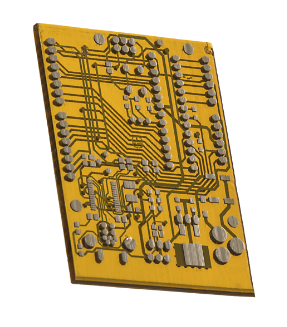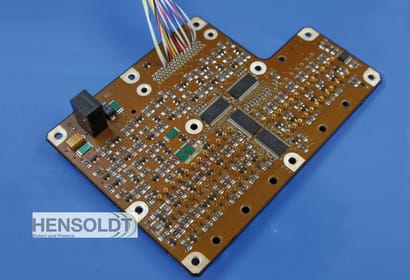 Printing today’s printed electronics involves lots of choice — from printer type to ink formulation, substrates and more.
Printing today’s printed electronics involves lots of choice — from printer type to ink formulation, substrates and more.
Two of the most popular printing methods are inkjet digital printing and analog printing, such as screen printing and photolithography. Both digital and analog involve depositing inks — electrically functional inks – onto a substrate. The result is an active or passive device, such as a thin film transistor or resistor.
Just as in conventional printing, both digital and analog printing work by applying ink in layers. There also are other important commonalities:
- Viable substrates include polymer, silicon, glass, silicon oxide, paper and more.
- Both are used for a variety of manufacturing applications, and for electronics used in solar panels, OLED, RFID, sensors and more.
The table below looks at digital printing and analog printing for printed electronics, and examines some of the positives and cautions for each.
| |
INKJET DIGITAL PRINTING |
SCREEN PRINTING |
| INK TYPES |
- Conductive silver ink (nano-particle)
- Conductive copper ink
- Dielectric inks
- Conductive silver inks
- Conductive copper inks
- Dielectric inks
- Conductive pastes
|
- Conductive silver inks
- Conductive copper inks
- Dielectric inks
- Conductive pastes
|
| POSITIVES |
- Nano-particle inks provide more precise, higher resolution end results than screen printing. Nano-particle inks are highly conductive so digital printing provides increased conductivity over screen printing
- Allows for creation of smaller elements with the same conductive results as larger elements
- No setup/tooling, including screens or stencils therefore changes in the printed pattern can be made immediately.
- The digital process makes no contact with the substrate
- Digital printing is cleaner and greener than analog, with no waste or hazardous materials
- Low operating cost — less labor, higher reliability, and uses less ink than screen printing
- More flexible production for easier customization and the potential to make smaller batches
- The high conductivity of nano-particle inkjet inks opens the door to a new world of advanced applications
|
- Well established, older processes
- Well established market
|
Industries that today should be considering moving to digital printing include those that require or design more flexible production, higher conductivity, greater precision and performance, new and innovative products, and those creating additive manufacturing (3D) applications.
Typical industries moving to or considering moving to digital printing today and their reasoning include photovoltaic/solar (better conductive fingers on panels, less waste, less shading, and lower cost); RFID (smaller batches and smaller antennas); OLED lighting (miniaturization and performance); and printed electronics (sensors, circuits, touch screens, bezel wiring, antennas, embedded components and more).
Click below for more information on how and whether digital printing using conductive inks is the right choice for your needs.
Is Your Company Ready?
